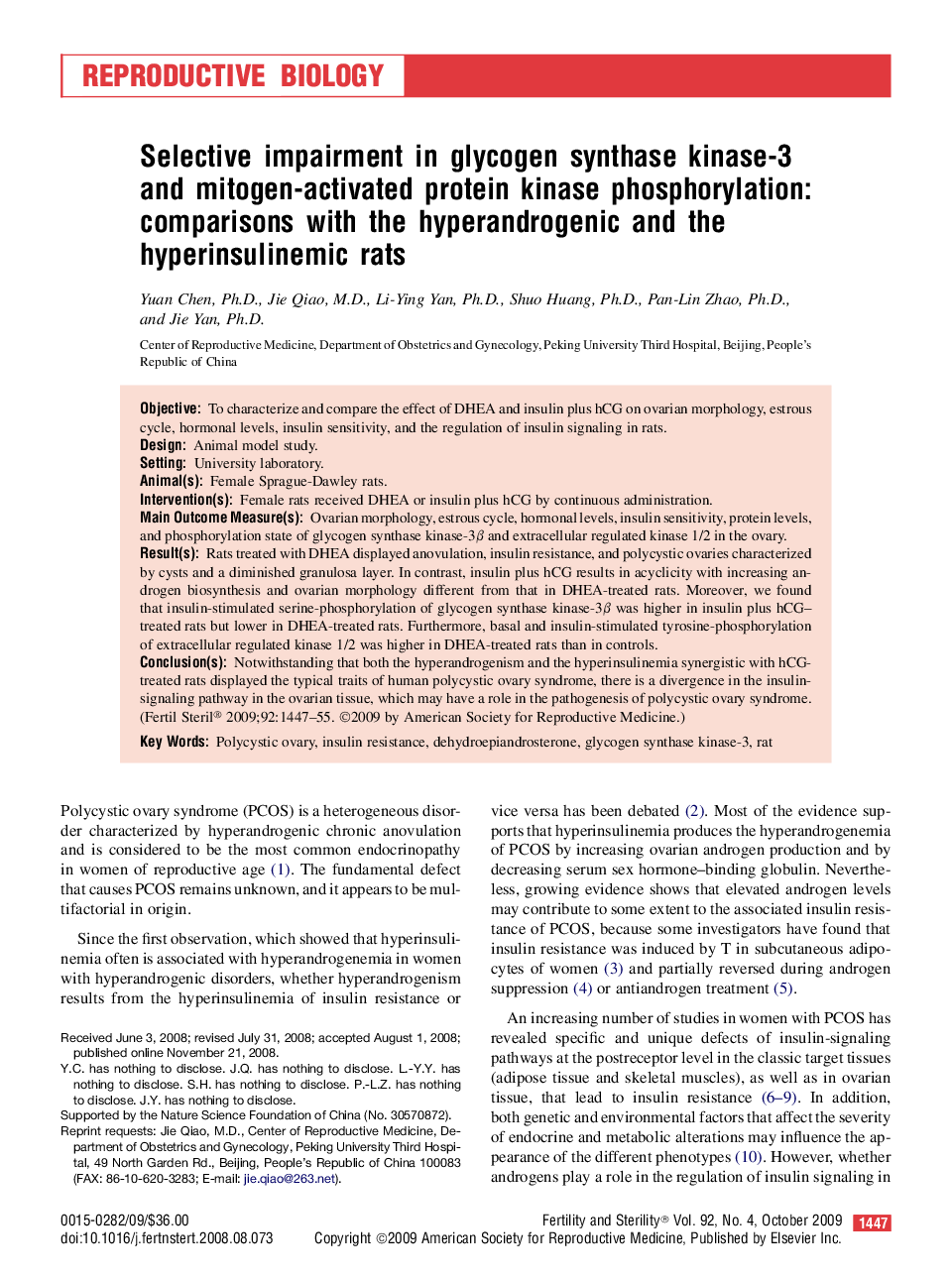| Article ID | Journal | Published Year | Pages | File Type |
|---|---|---|---|---|
| 3936597 | Fertility and Sterility | 2009 | 9 Pages |
ObjectiveTo characterize and compare the effect of DHEA and insulin plus hCG on ovarian morphology, estrous cycle, hormonal levels, insulin sensitivity, and the regulation of insulin signaling in rats.DesignAnimal model study.SettingUniversity laboratory.Animal(s)Female Sprague-Dawley rats.Intervention(s)Female rats received DHEA or insulin plus hCG by continuous administration.Main Outcome Measure(s)Ovarian morphology, estrous cycle, hormonal levels, insulin sensitivity, protein levels, and phosphorylation state of glycogen synthase kinase-3β and extracellular regulated kinase 1/2 in the ovary.Result(s)Rats treated with DHEA displayed anovulation, insulin resistance, and polycystic ovaries characterized by cysts and a diminished granulosa layer. In contrast, insulin plus hCG results in acyclicity with increasing androgen biosynthesis and ovarian morphology different from that in DHEA-treated rats. Moreover, we found that insulin-stimulated serine-phosphorylation of glycogen synthase kinase-3β was higher in insulin plus hCG–treated rats but lower in DHEA-treated rats. Furthermore, basal and insulin-stimulated tyrosine-phosphorylation of extracellular regulated kinase 1/2 was higher in DHEA-treated rats than in controls.Conclusion(s)Notwithstanding that both the hyperandrogenism and the hyperinsulinemia synergistic with hCG-treated rats displayed the typical traits of human polycystic ovary syndrome, there is a divergence in the insulin-signaling pathway in the ovarian tissue, which may have a role in the pathogenesis of polycystic ovary syndrome.
